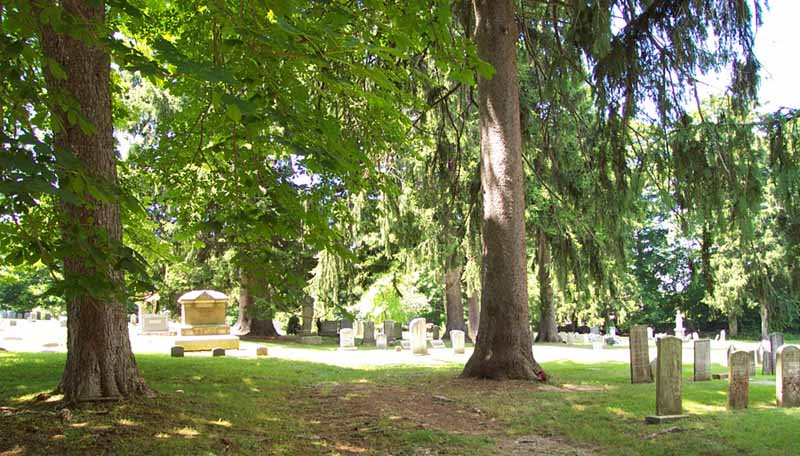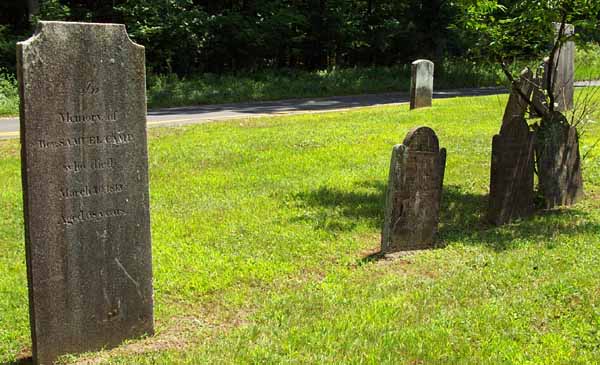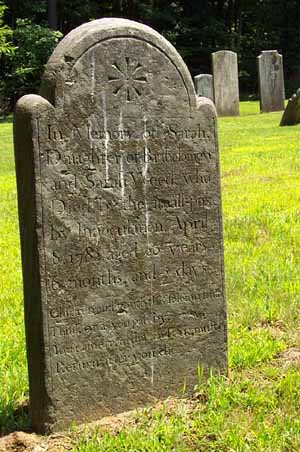

Ridgebury Cemetery
Ridgebury Cemetery, established in 1743, is still used today, It's one of the town's prettiest cemeteries, containing both open and shaded sections and stones from four different centuries. Surnames like Keeler, St. John, Benedict, Weed, Birchard, Norris, Abbott, Lynes, and Bennett are frequently seen among the more than 400 gravestones here. Unfortunately, many of the 18th and 19th Century stones have suffered from the effects of age, and their inscriptions wearing thin.
Among the many interesting stones at Ridgebury are:

|
The gravestone of the Rev. Samuel Camp (left), minister
of the Ridgebury Congregational Church, and those of his three wives,
all matching but smaller stones shown at the right. Hanna
died in 1777, aged 34; Lucretia, in 1782, aged 35; and Mary, 1800, aged
55. Mr. Camp resigned due to failing health in 1804. Although he did not
die until 1813, perhaps fortunately for the women of Ridgebury, he did
not remarry. |

|
Above is the gravestone of 26-year-old Sarah Weed, who died April 8, 1782, after having been inoculated with small pox -- a technique erroneously believed to prevent a more serious occurrence of the disease. Nearby is her brother, who drowned in 1779 at the age of 17. |

|
The 1835 tombstone of Gamaliel Benedict has two symbolic features typical of the era. The weeping willows represented mourning; and the urn represented the death of the body and its return to dust. Placing the initials of the dead person next to the urn emphasized the message. |